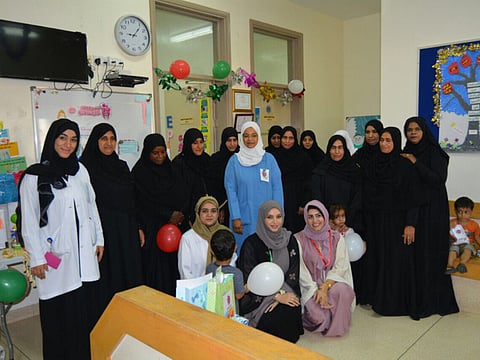Birth spacing ‘improving health of Omani women’
Programme also empowers women to exercise reproductive rights

Muscat: The process of birth spacing — or maintaining a time frame between pregnancies — in Oman got its first boost in 1993, following a public declaration by Sultan Qaboos Bin Said on the issue of high population growth putting a burden on Omani families as well as on national resources.
Birth spacing programmes are offered for free by the Omani Health Ministry. Dr. Fatma Al Hinai, Director of Women and Child Health at the ministry, believes spacing the birth of children is essential to improve the health of women, as it reduces maternal and infant mortality.
Although every pregnancy carries with it a risk of maternal death or morbidity, some pregnancies are higher risk than others. A birth spacing programme attempts to reduce these risks in young or middle-aged women, the senior Omani health official told Gulf News.
A wide range of birth spacing services are administered through MoH clinics. These includes access to information and education, and counselling for women for using birth spacing methods.
Birth spacing enables women to rebuild the deficiencies that their bodies develop during pregnancy and labour. Taking a gap between pregnancies enables women to minimise the risks involved in the intrapartum (onset of labour through delivery) and post-partum stages of childbirth.
Dr Al Hinai said: “It is imperative that women maintain birth spacing. It also empowers a woman, giving her choice for her health needs.”
Modern medical methods
Clinical services fostering birth spacing methods are oral or injectable hormonal contraceptives, intrauterine devices, family planning preventions and implants such as Implanon NXT. These implants are hormone-filled rods (referred to as capsules) that are inserted under the skin of a woman’s arm. Implanon NXT is a single-rod system that continually releases a low, steady dose of the progestin etonogestril (medication used for birth control) for three years.
Intrauterine Contraceptive Devices (IUCDs), made of plastic and medicated, are small flexible (T) shaped device inserted in the uterine cavity for effective long-term contraception. In Oman, the MoH provides Copper T 380 A type, which is effective for 10 years.
Speaking about the benefits of birth spacing, Dr. Al Hinai said: “Child spacing empowers women to regulate fertility safely and effectively. This allows them to exercise their reproductive rights and improve the health of their children.”
UN assistance
The MoH adopted a joint annual plan with the United Nations Population Fund (UNFPA) GCC sub-regional office in Oman. Under the plan, technical and financial support is provided to the Ministry during the planning, action and execution of activities that are under the purview of its birth spacing programmes.
The WHO mission to review the birth spacing programme in the Sultanate noted that it had made a significant contribution to the reduction of maternal and child mortality, over the past few years.
Oman’s Heath Minister, Dr Ahmad Bin Obaid Al Sa’eedi, said the health sector had advanced over the years owing to the quality of its services and improvements in lifestyle.
The UNFPA GCC sub-regional office in Oman is also helping the government arrest a decline in birth spacing. Asr Toson, UNFPA’s GCC representative, was earlier quoted as saying: “The Health Vision 2050 of the Sultanate and MoH’s mission focuses on improving access to health services and ensuring equity in health service availability and utilisation. There are major developments regarding the health services available to women through many public clinics and hospitals. UNFPA GCC has been working with the Ministry of Health to ensure the availability of such services since the office’s inauguration in 2006.”
Sign up for the Daily Briefing
Get the latest news and updates straight to your inbox



